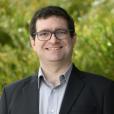ANSTO's Australian Synchrotron Program Advisory Committees (PAC)
The Program Advisory Committees review proposals submitted to a particular beamline at the Australian Synchrotron

Showing 301 - 320 of 395 results
The Program Advisory Committees review proposals submitted to a particular beamline at the Australian Synchrotron

Dr Katie Sizeland, a Postdoctoral Fellow on the Small Angle X-ray Scattering beamline at the Australian Synchrotron, has been chosen for the Homeward Bound STEMM leadership program

With enhanced submicron spatial resolution, speed and contrast, the Micro-Computed Tomography beamline opens a window on the micron-scale 3D structure of a wide range of samples relevant to many areas of science including life sciences, materials engineering, anthropology, palaeontology and geology. MCT will be able to undertake high-speed and high-throughput studies, as well as provide a range of phase-contrast imaging modalities.
Detailed data on ANSTO electricity use and CO2 emissions for FY2022 - FY2023
International collaboration uses Australian Synchrotron on pioneering malaria research.
ANSTO is coordinating and facilitating the calling of pre-concept papers for the next cycle of technical cooperative project proposals under the Regional Cooperative Agreement for Research, Development and Training Related to Nuclear Science and Technology for Asia and the Pacific (RCA) | IAEA

Researchers based at Monash University and the Swedish Museum of Natural History have pioneered the use of nuclear imaging techniques at ANSTO’s Centre for Neutron Scattering to resolve long-standing problems in plant evolutionary history linked to wildfires.

An commercial technical consultant with ANSTO, based at the Clayton Campus, Dr Robert Acres collaborates with industry partners to improve products and processes within small to large enterprises and acro
A large international team has provided an understanding of how nanoscale interactions affect the thermal stability of a type of next generation organic solar cells.
Ultra-flexible electronics has many potential applications within areas such as for example the military, healthcare and energy.


The Australian Centre for Neutron Scattering (ACNS) is a major research facility for neutron science that comprises a suite of neutron instruments with a range of techniques for scientific investigations in physics, chemistry, materials science, medicine and environmental science among other fields.
